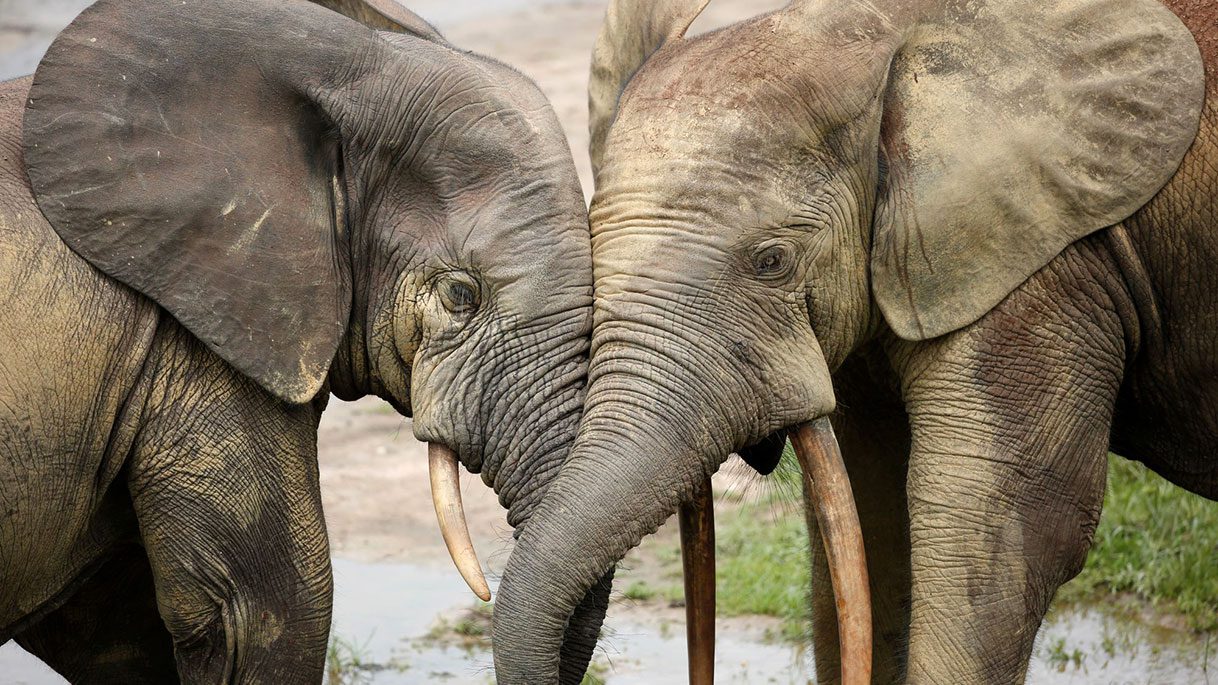
From the Summer 2024 issue of Living Bird magazine. Subscribe now.
To fly over one of the great remaining tropical forests is to be hit by a barrage of emotions. Sheer joy that such wild places still exist. Mounting excitement at the prospect of exploring their secrets. A looming fear for their future. And nervous trepidation about how humans can understand such vast systems in time to make a difference in protecting them.
Nowhere have these emotions been more intense for me than my recent trip flying into the Congo Basin in Central Africa for the first time. Vast tracts of primary forest stretch as far as the horizon. Immense brown rivers snake across the landscape. No visible roads or buildings or signs of human habitation. This is Dzanga-Sangha—a huge reserve of nearly 3,000 square miles spanning the Central African Republic, the Republic of Congo, and Cameroon—established to protect high-density populations of megafauna including western lowland gorillas and forest elephants.
My immediate reason for being here is to visit the Cornell Lab of Ornithology’s Elephant Listening Project, a pioneering study that has used bioacoustic monitoring to eavesdrop on the deep, rumbling conversations of forest elephants for more than 25 years. The project has been hugely influential in the fields of animal behavior and conservation, and was one of the first to demonstrate the potential power of bioacoustics. The broader context is to listen to the needs of the on-the-ground conservation groups that are charged with managing these incredible forests, and understand how the Cornell Lab’s expertise in bioacoustic monitoring can help them in their work.
Managing reserves like Dzanga-Sangha is only possible through deep collaboration between national governments, local communities, and nonprofit organizations—in this case the Wildlife Conservation Society and World Wildlife Fund. Two needs stand out, both focused on obtaining the data needed to make smarter decisions. The first is live detection of key sounds like gunshots, chainsaws, human traffic, or the calls of endangered species. Poaching is still a major risk, and any alerts to the activities of illegal hunters are invaluable. The second is the accumulation of longer-term information about the impact on biodiversity from activities like logging, mineral extraction, urban expansion, and ecotourism. Traditional wildlife species monitoring in a remote place like this is effectively impossible. Can we harness the power of cutting-edge technology like AI-driven bioacoustics to make a difference?




The Cornell Lab has a potential model for this type of large-scale bioacoustic monitoring in the form of our work in the Sierra Nevada mountains of California. That project now comprises a network of more than 2,000 bioacoustic recorders, covering about 10,000 square miles of rugged peaks and valleys, and gathers data that directly guides the work of state and federal agencies. It uses the Cornell Lab’s BirdNET platform to recognize the calls of birds, mammals, and amphibians. Could we do something at this scale in the great forests of the Congo Basin, the Amazon, and New Guinea?
Rising to a grand challenge like this will take rapid acceleration in both hardware and software. For hardware, it will require low-power, high-fidelity audio recorders that can operate for long periods of time in arduous conditions, across a wide variety of wavelengths, and, most challenging of all, are capable of transmitting live detections of target sounds. If the approach is to be scalable, the recorders also need to be sufficiently affordable for scientists and conservation groups around the world. On the software side, we need to make a system that is sufficiently flexible and easy to use, so that researchers and managers can train models to recognize the sounds and species most relevant to their needs, and create an underlying archive that makes the information available to the global community.
It sounds almost impossible. Exactly where the Cornell Lab should be.

